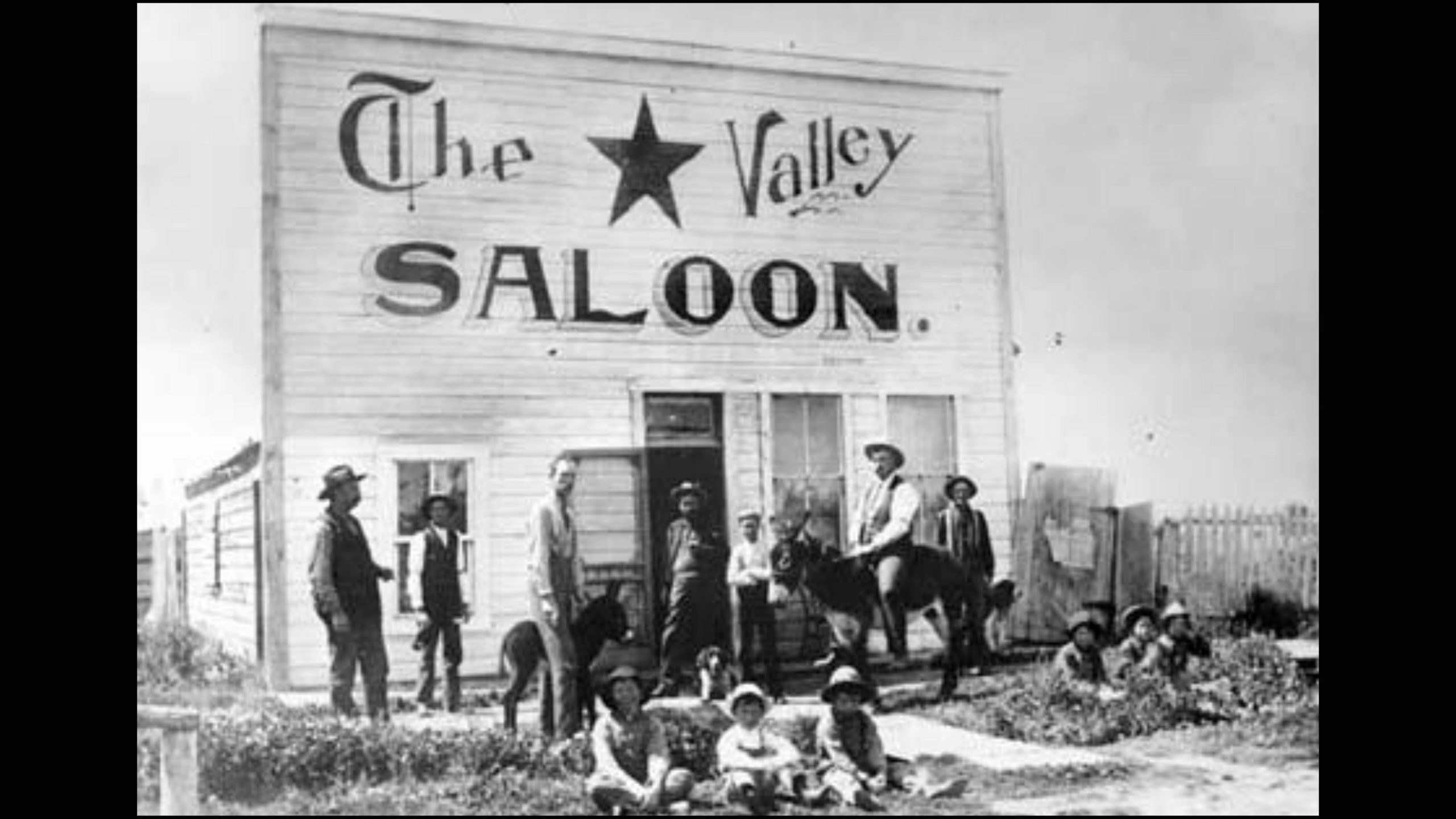A look back at Wyoming newspapers issued 100 years ago this week found that the nation was generally grumbling over prohibition laws and the promise of more “Blue laws” that were designed to preserve the Sabbath by restricting or banning a variety of activities on Sundays. While some blue laws prohibited regular work on Sundays, others banned any buying, selling, traveling, public entertainment, etc., which some claimed were intended to close down every pursuit and business on Sundays so that only churches would be open. Here’s a sampling from Wyoming’s news 100 years back.
With a dateline of Washington, D.C., the “Senate Or Soviet: Which Do We Want,” editorialized: “It must be apparent to any thotful person that there are some thousands of people of various degrees of radicalism who would like to overthrow or hamper our government. They lose no opportunity to create a prejudice against it. They select the Senate as one of their most frequent objects of attack, for the reason that it was formerly looked upon as a rich man’s legislative body and out of touch with the welfare of the people. The ‘reds’ whatever their degree of redness, are always denouncing the senate. When substantial citizens voice similar sentiments, they are uniting their influence with the forces of radicalism to destroy confidence in government, and when that has been accomplished, chaos will follow.” – Douglas Enterprise, Jan. 2, 1923
In this age of prohibition, Wyoming’s fourth democratic Governor William B. Ross spent one third of his inaugural address discussing the controversy over alcohol prohibition laws, declaring his priority to faithfully enforce “all laws so far as within my power … whether they meet with my approval or not.”
Ross said: “Good citizens who have no sympathy for the prohibition law realize that laws protect human society and that so long as a law exists it must be enforced. The condition resulting from the effort to obstruct the enforcement of this prohibition law have become alarming. Regardless of whether we like a law or not, good citizenship and patriotism demand that it be obeyed as long as it is a part of the statutes. If it an unwise law it should be repealed.”
– The Riverton Review, Jan. 3, 1923
In the Cody Enterprise, publisher Caroline Lockhart wrote in her column As Seen From The Water-Wagon: “We have observed that winter is our season of strife and turmoil. In the summer we are too busy to fight but as soon as the tourists have departed we take off our coats and go at it. With ample time to select upon grievances, feuds are resurrected; the Purity Leaguers begin worrying about other people’s morals; the Vice Crusades start sniffing out evil; everybody gets touchy and sensitive, and it behooves one to smile when he makes disparaging and personal remarks to the friend of his bosom. We look at each other critically and suspiciously, and make no bones of saying that we could run our neighbor’s business much better than he does. Black eyes and a few bruises cause no comment, while $10 and costs for disturbing the peace is the Judge’s favorite sentence.
“Then the snow goes out of Sylvan Pass and the Palefaces come in from New York, Boston, or Buffalo. Presto! The two that were trying to disembowel each other in December are off on a bear-hunt together in March or April. The Purity Leaguers leave people to look after their own morals and the Vice Crusaders quit crusading, while feuds are buried and the Judge says “For Speeding – $50.” – The Cody Enterprise, Jan. 3, 1923
Also 100 years ago this week:
The 545 students registered at the University of Wyoming represents “an increase over the enrollment at this period last year of 132 students.” – Jackson Hole Courier, Dec. 30, 1922
“Probably the third-largest deposit of coal in the world is being opened five miles east of Gillette by the Mark Shields Coal Company. The vein extends to a depth of 95 feet and covers an area of 800 acres. Only two other fields in the world are larger, it is claimed, those of France and India and one in Australia.” – Jackson Hole Courier, Dec. 30, 1922
“In a statement made recently to a Burlington railroad official, the superintendent in charge of the construction of the highway thru the Wind River canyon said that in all probability the road would be ready for surfacing by the first of June. The superintendent also said that because of the nature of the present surface of the road the graveling would have to be done by team, as the extremely fine sharp rock blasted down would cut truck tires to pieces. From present indications a conservative statement on when the road would be open for travel would be the first of September.” – The Riverton Review, Jan. 3, 1923
At the first Fremont County Commission meeting in the new year, the commission “took up the matter of providing for a budget for the coming year, and had all the other county officers on the carpet as to what they could have off the expenses of their office. Quite a lot of the actual work was done by the commissioners in regard to reducing the expenses of the county, so as to meet the loss of three million dollar’s valuation, on account of the loss of the Pinedale country, which is now Sublette County. The amount will have to be made up or the millage raised, and the commissioners do not want to do this.” – Lander Evening Post, Jan. 2, 1923 (Sublette County, the 23rd county, was organized 100 years ago this week.)
“The route of the proposed Miles City to Casper railroad to be constructed by the Montana-Wyoming Railroad company, if it follows the tentative suggestions outlined in engineers’ reports compiled for the Sheridan Commercial club, will pass through the heart of the greatest known coal field in the United States and probably in the entire world.” – Laramie Daily Boomerang, Dec. 30, 1922
“One hundred thousand brook trout were received in Dayton from the Bozeman, Montana government hatchery and were distributed immediately at various points along the Tongue River on top of the first range of the Big Horn mountains. The fish were procured through the endeavors of the Sheridan Rod and Gun Club.” – Jackson Hole Courier, Dec. 30, 1922
“Tom McDonald, who has charge of the animals in the state zoo on the Hot Springs reserve, was attacked and badly bitten by the largest of the bears last Saturday when he went into the cage to crop the ice out of the feeding trough.
“The beast suddenly attacked him, sinking his teeth into the fleshy part of the thigh, badly tearing and lacerating the flesh and knocking him into the tank. The bear did not follow up on the attack until Mr. McDonald got up, when he bit him again in nearly the same place. A boy who chanced to be going by passed an axe through the bars to Mr. McDonald by even with that he could not beat the savage brute away. He then called for a heavy chain which had been used to subdue the bear when he got unruly, and when that was thrown into the cage the bear retired to the rocks and let the injured man escape.” – Thermopolis Record, Dec. 28, 1922 (Note: McDonald was expected to recover, and the bear was slated to be killed.)
“Henry Sinclair, head of the Mammoth Oil Company that secured the contract for the development of the Teapot Dome federal oil reserve, has again been the successful competitive bidder for the royalty oils accruing to the federal government from the Salt Creek fields. The oil will be piped to the Sinclair lines in Kansas, securing the Mid-Continent prices, and the net gain to Wyoming for her share of the royalty will be nearly a million dollars per year. …. The difference between the Mid-Continent prices paid by the Sinclair interests and the prices heretofore paid for Salt Creek crude by the interests that have controlled that field means that the royalty oils will bring 70 cents to 90 cents a barrel more than formerly.”
– Thermopolis Record, Dec. 28, 1922
If you’ve enjoyed these snippets of Wyoming history, take a look at the website of the Wyoming Digital Newspaper Collection at wyomingnewspapers.org. The site is a service of the Colorado and Wyoming State Libraries and the University of Wyoming.Cat Urbigkit is an author and rancher who lives on the range in Sublette County, Wyoming. Her column, Range Writing, appears





